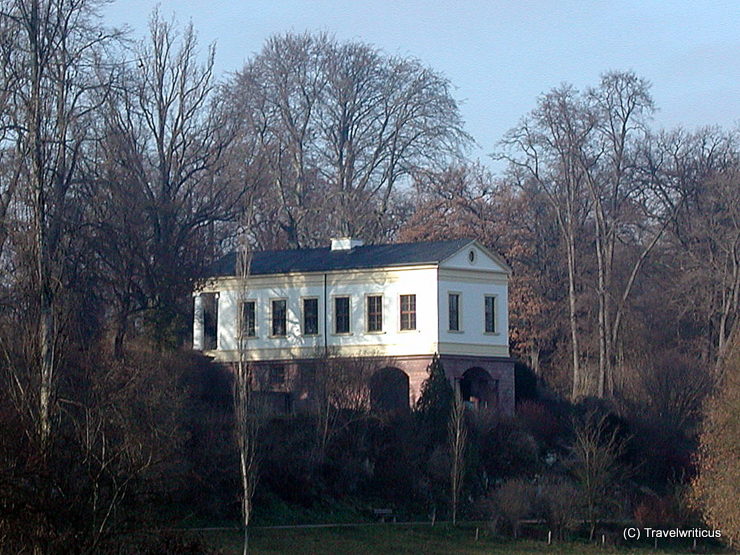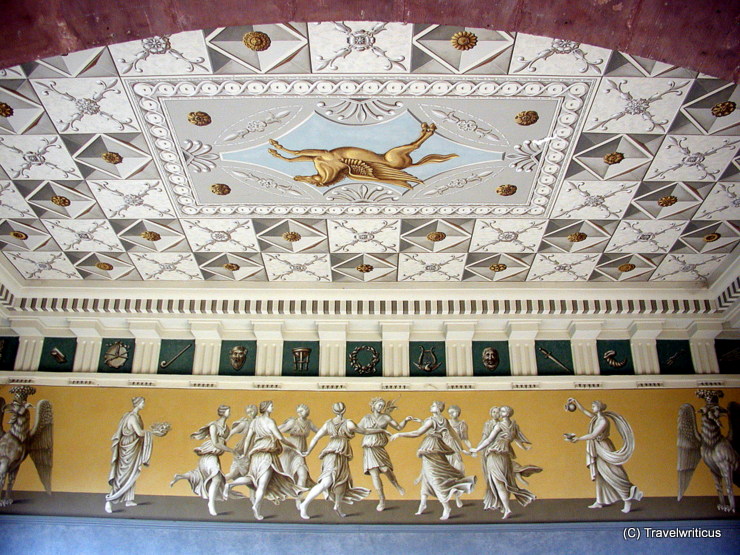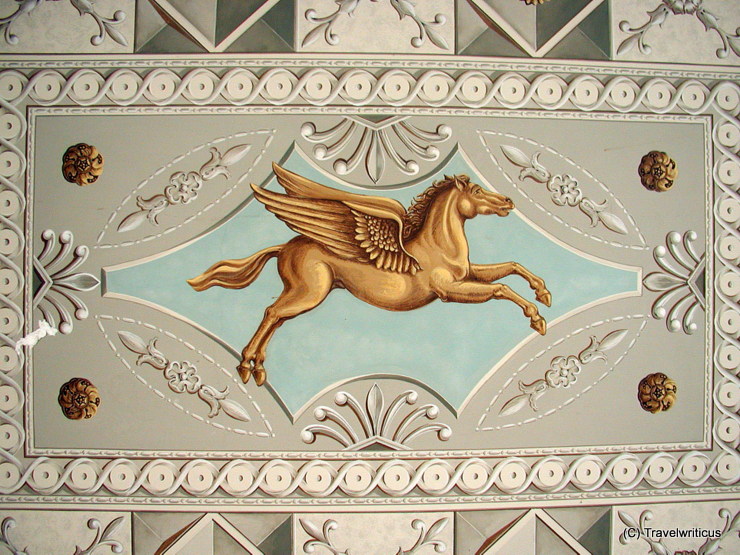
The Roman House in Weimar stands high above the Ilmpark and offers a beautiful view of the countryside from its windows. Grand Duke Karl August once enjoyed this view. Today, a museum inside tells about the history of the park. [German]
The Roman House in the Ilmpark
We discover the Roman House during a walk in the Ilmpark. It’s winter, and the leafless trees and shrubs reveal the classical period building. With its location on a slope, the house forms an intriguing two-floor construction in the park.
The entrance, hidden behind a classic portico, is unfortunately closed. As a result we can’t visit both the Blue and Yellow Halls. Celebrations were held in the first, and the study of Karl August, Grand Duke of Saxe-Weimar and Eisenach was in the second.
The Roman house was his place of retreat but also his residence for the warm summer months. He got inspiration for the design from none other than Johann Wolfgang von Goethe. From his Italian journey the German writer brought back all sorts of inspiration for a Roman villa.
The wall paintings in the passage

But then we experience a surprise in the passage that opens under the Roman House. Although it is open on three sides and thus exposed to all weather conditions, it shows magnificent wall paintings on its ceiling. Fleet-footed damsels perform a round dance, a Pegasus demonstrates its flying skills by persistently hovering on top of it.

UNESCO World Heritage “Classical Weimar”
Since 1998, the Roman House in the Ilmpark has been a UNESCO World Heritage Site. It share this honour with several other buildings in Weimar. The attractions summarized under the title “Classical Weimar” show how the bourgeois Enlightenment was reflected in the courtly culture of a Central European residence around 1800.
Sources / More info
- Link Official website of the Roman House with opening hours